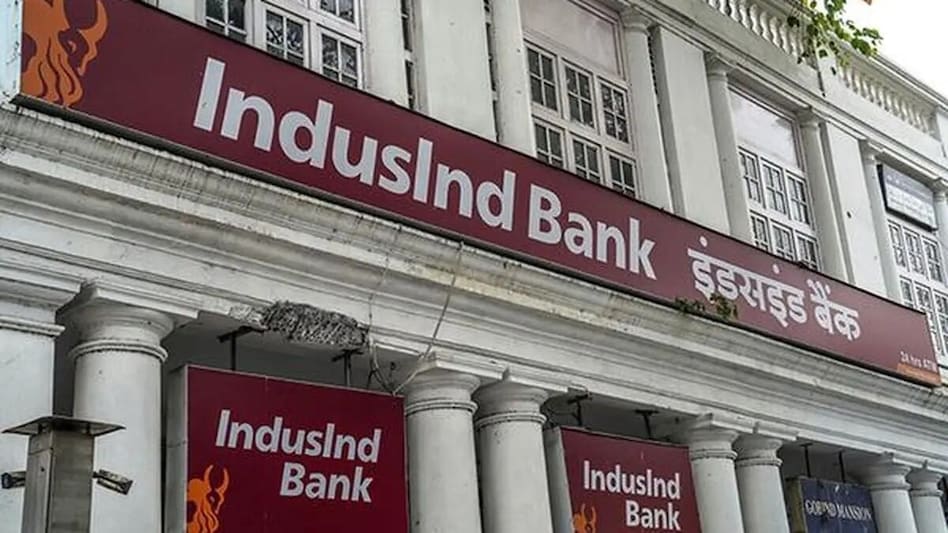 Despite ongoing uncertainties and softness in performance, MOFSL reaffirmed its Neutral rating on IndusInd Bank.
Despite ongoing uncertainties and softness in performance, MOFSL reaffirmed its Neutral rating on IndusInd Bank.  Despite ongoing uncertainties and softness in performance, MOFSL reaffirmed its Neutral rating on IndusInd Bank.
Despite ongoing uncertainties and softness in performance, MOFSL reaffirmed its Neutral rating on IndusInd Bank. IndusInd Bank (IIB) has seen a significant decline in its operating performance, primarily due to asset quality issues and accounting discrepancies, according to MOFSL. The brokerage firm highlighted that these issues have greatly impacted the bank's financial health and stock valuation.
While the bank has acknowledged the negative effects of these abnormalities, MOFSL noted that "near-term pressure on margins and elevated provisioning are likely to continue suppressing RoA recovery in the near term." This continued pressure is expected as the bank manages the fallout from recent challenges.
MOFSL stated that the bank utilised its contingent buffer during the fourth quarter of FY25. The anticipated implementation of the Expected Credit Loss (ECL) framework could further increase credit cost pressures in the future. This move is part of the bank's strategy to address its financial irregularities.
On a positive note, media reports indicate that IndusInd Bank has submitted the names of three seasoned private sector bankers to the Reserve Bank of India (RBI) for consideration as potential new leadership. "Clarity on the appointment of the new CEO and the strategic direction under their leadership will be key," MOFSL said.
Despite ongoing uncertainties and softness in performance, MOFSL reaffirmed its Neutral rating on IndusInd Bank. The firm has adjusted its perspective, removing the bear case multiples previously assigned to the stock. This adjustment reflects heightened irregularities and diminished confidence in reported figures, yet earnings estimates remain broadly unchanged. The target price has been revised to INR 800, up from INR 650, based on 0.9x FY27E ABV.
IndusInd Bank's microfinance segment continues to face challenges. "The continued unwind and ongoing challenges in the MFI business are likely to keep business growth muted in the near term," MOFSL commented. The brokerage anticipates a gradual recovery starting from the second quarter of FY26, with momentum expected to strengthen further into FY27.
Loan and deposit growth is projected to remain modest, with estimates of 6.5 to 7 per cent year-on-year growth for FY26. The bank reported a normalized margin of 3.47 per cent for the fourth quarter of FY25. However, MOFSL expects net interest margins (NIMs) to contract further due to rate cut transmissions and a decline in high-yield asset mixes.
NIMs are expected to stabilise from the second quarter of FY26 onwards as the bank implements savings account rate cuts. MOFSL noted that "the benefits of deposit repricing materialize amid a sharp decline in bulk deposit costs." This repricing is anticipated to aid margin recovery.
MOFSL noted that the bank's profitability has undergone a reset, with the return on assets predicted to stay subdued at 0.5 per cent in FY26, gradually recovering to about 1 per cent by FY28. This reflects a slow and steady climb following disruptions in FY25.
The bank's loan growth strategy has been cautious, with only a slight increase in advances of 0.5 per cent year-on-year for FY25. The loan book declined by 6 per cent quarter-on-quarter in the fourth quarter of FY25. Challenges in the microfinance and vehicle business sectors have contributed to this slowdown.
IndusInd Bank aims to address its high-cost liabilities, facing significant challenges with its liability franchise that have led it to raise more bulk deposits and certificates of deposit. Consequently, MOFSL estimates deposit growth to remain soft at 6.5 per cent for FY26, with a gradual recovery of 10.5 per cent by FY27.
MOFSL expects near-term NIMs to remain under pressure, primarily due to recent repo rate cuts and ongoing issues in high-yielding segments. "Adjusted NIMs in 4QFY25 fell sharply to 3.47 per cent, with reported figures at just 2.25 per cent owing to several one-offs," the brokerage noted. It anticipates a further 25 basis point contraction in margins during the first quarter of FY26.